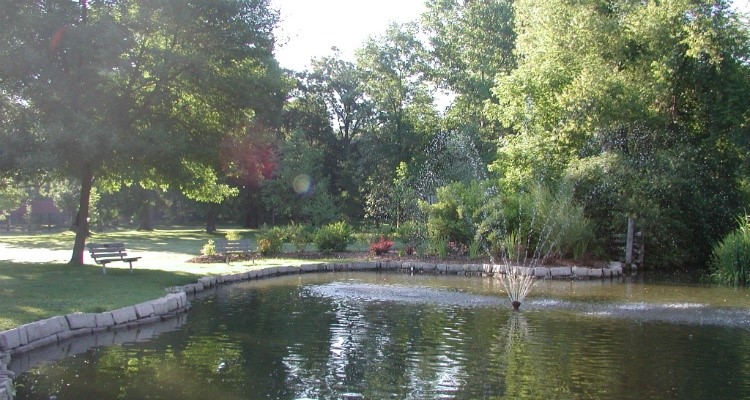by George Mathewson for the Sarnia Observer
(2003) Imagine Sarnia without Canatara Park. No sandy beach. No leafy paths. No bandshell or animal farm. Well, the crown jewel in Sarnia’s park system would likely be a gaping crater or buried under a sprawling subdivision today if it hadn’t been for the philanthropy of one remarkable woman.
Maud MacAdams Hanna was a civic-minded individual who gave freely of her time and money. She had a soft spot for kids and authored a respected booklet on wildflowers and conservation. And she had money. As the widow of W.J. Hanna, the president of Imperial Oil and a Conservative MPP who became Secretary of Ontario, she moved in powerful circles.
In 1932, during the Depression, Maud Hanna quietly offered the city the princely sum of $10,000 to create a waterfront park. She envisioned a place where children and families without means could enjoy a day freely in the fresh air. Opportunity knocked when a company intending to mine the lakefront for sand and gravel succumbed to the times and declared bankruptcy.
The mayor, James Barr, convinced a reluctant council to provide another $10,000 and buy the company’s 21 hectares (53 acres) of sand and oak woods. Barr had just one hour to pick up a councillor, drive out to Mrs. Hanna’s house, sign the cheque and necessary papers and have them delivered on time, a niece later recalled. The cost to the city was eight cents per person for 10 years. The deal was a defining moment for Sarnia park preservation, volunteer Larry Neil once told The Observer.
“Everybody who lives here now truly benefits from that park. It would probably be a big hole in the ground if the Depression hadn’t come and (Hanna) hadn’t put up the money.”
It’s often assumed Maud Hanna owned the land and gave it to the city. Actually, she paid for half the first purchase and was active in subsequent land additions. In one case, she bought property for an entranceway from Woodrowe Road and turned it over to the city. In another, she provided $1,250 to buy Lake Chipican, or Little Lake as it was then known, from a real estate company. The pond itself has a long history. On June 21, 1879, a tourist attraction called International Park opened there with a dance pavilion, merry-go-round and games. In August, the great Ned Hanlon gave a sculling exhibition. Despite rail and steamboat excursions, however, the project couldn’t support itself and was abandoned. The buildings were moved off and the land used a s a quarantine grounds.
Among her many accomplishments, Mrs. Hanna helped create a children’s ward at Sarnia General Hospital and a Boy Scout Hall. She provided area youngsters with free streetcar rides to the lake. She gave Canatara its name, borrowing an Ojibwa word for blue water.
Today, with a kilometre of sandy beach and 75 hectares (184 acres) of green space in which to mark Canada Day and other civic events, Canatara Park is an oasis for all.
When Maud Hanna died in Toronto on July 2, 1946, all of Sarnia mourned. A school and a park are named in her honour.


